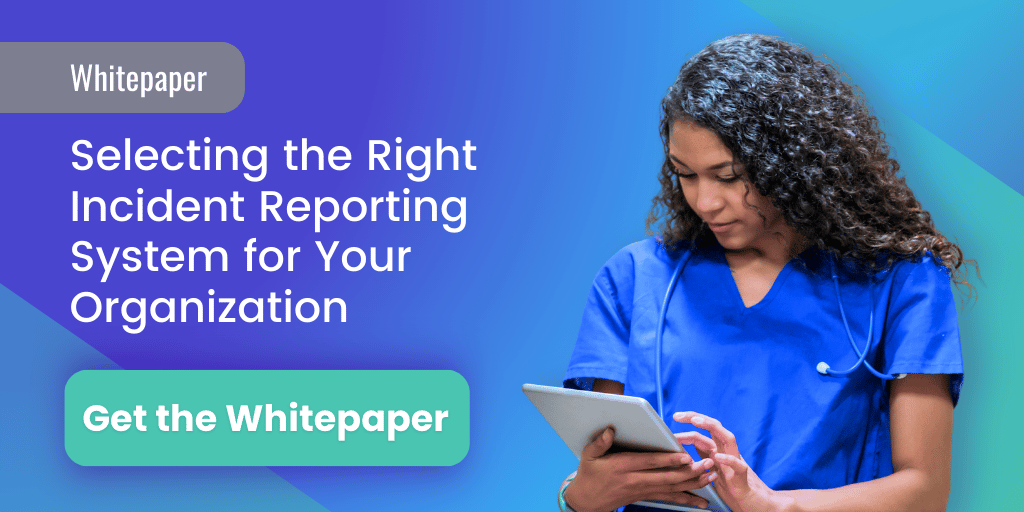4 min read
How to Use Anonymous Reporting for Safer Patient Care
Performance Health Partners
May 13, 2025

Anonymous reporting can be an effective tool in healthcare, where patient well-being is paramount and fostering an environment of transparency and accountability is crucial. Anonymous reporting in healthcare allows employees, patients, and even visitors to report safety observations without fear of retaliation. Continue reading to explore the importance of anonymous reporting in healthcare, its benefits, and ways to implement it effectively.
What is Anonymous Reporting?
Anonymous reporting refers to a system or process where individuals, such as healthcare workers, patients, or visitors, can report safety concerns, medical errors, unethical behavior, or other observations without revealing their identity.
This mechanism is crucial for promoting transparency, patient safety, and ethical standards within healthcare organizations. It allows concerned individuals to come forward with critical information without fear of retaliation, ensuring that issues are addressed promptly, and that patient well-being remains the top priority.
Anonymous reporting is a valuable tool for identifying systemic problems, improving the quality of care, and maintaining the highest ethical standards in the healthcare industry.
Benefits of Anonymous Reporting in Healthcare
Anonymous reporting not only increases the number of reports submitted but also fuels quality improvement initiatives, making healthcare delivery more effective and patient-focused. Below are additional benefits of anonymous reporting in healthcare:
Improved Patient Safety: Anonymous reporting helps identify and address medical errors, near-misses, and unsafe conditions. By reporting incidents anonymously, healthcare workers can contribute to the prevention of patient harm and the enhancement of overall patient safety.
Ensuring Blame-Free Reporting: Perhaps the most significant benefit of anonymous reporting is the protection it offers to concerned individuals. Those who have safety concerns can report them without the fear of losing their jobs or facing other forms of blame and or retaliation. Considering there’s a 16% decrease in retention rates for employees who do not feel comfortable giving upward feedback, making alleviating such fears of utmost importance.
Enhanced Accountability: Healthcare organizations can only address issues they are aware of. Anonymous reporting systems promote transparency and accountability, as they allow concerns to be brought to light and addressed promptly.
Improved Employee Satisfaction: Knowing that their concerns will be taken seriously – and their identities protected – employees are more likely to feel valued and satisfied in their workplace. This can lead to better morale and reduced turnover rates. According to McKinsey, 54% of employee resignations can be attributed to employees not feeling valued by management.
Increased Reporting: In her book, “Shared Voices: A Framework for Patient and Employee Safety,” Performance Health Partners founder and CEO Heidi Raines highlights the impact of anonymous reporting. She explains that, "Anonymous reporting can boost the number of reports submitted by reducing the fear of negative consequences and incentives to conceal information."
Research on workplace wrongdoing further supports this idea, revealing that 70% of employees are more likely to submit reports when their anonymity is protected.
When employees feel comfortable sharing the details of safety events or near misses, it results in an increased number of reports.
Quality Improvement: An increase in reporting, in turn, leads to a wealth of data collected by management. This data provides healthcare organizations with valuable insights into safety process gaps and areas for improvement, ultimately enhancing their understanding of these critical aspects. This information often serves as a catalyst for targeted quality improvement initiatives, resulting in better patient outcomes and more effective healthcare delivery.
Cultural Transformation: Anonymous reporting systems can contribute to a cultural shift within healthcare organizations by promoting transparency and accountability. As leaders prioritize these values, it sets a positive example for employees and fosters a culture of continuous improvement.
According to the "Whistleblowing Report," when companies offer anonymous reporting, about one-third of those who report concerns are willing to come forward and provide additional information during the investigation that follows.
This demonstrates that when employees trust that they won't face negative consequences for reporting, they feel more comfortable, leading to stronger trust within the organization.
How to Implement Anonymous Reporting
Learn how to implement anonymous reporting at your organization effectively with these nine key steps, from defining objectives and developing policies to fostering transparency and protecting report contributors for a safer and more accountable healthcare environment.
- Define Objectives and Scope: Determine the objectives of the anonymous reporting system, including the range of concerns or incidents it should encompass. Examples include medication errors, safety hazards, ethical violations, or compliance issues. Establish the scope of the reporting system, including healthcare facilities or departments it will include and the individuals that can make reports.
- Develop Policies and Procedures: Create comprehensive policies and procedures that outline how reports will be submitted, received, and managed. Emphasize the importance of confidentiality and the protection of those who report. Ensure that the reporting system is in compliance with relevant healthcare laws and regulations.
- Assign Oversight: Designate a dedicated team or individual responsible for overseeing and managing the anonymous reporting system. Ensure that these personnel are trained in handling sensitive information and understand the importance of maintaining anonymity.
- Select Reporting Mechanisms: Implement a user-friendly Incident Management System or mechanism that’s easily accessible to all stakeholders. Make sure your chosen reporting platform is available 24/7 and provide clear instructions on how to submit reports anonymously. Providing staff with an incident report example to always refer to can help streamline the process and avoid confusion.
- Protect Report Contributors: Make it clear that individuals who report concerns are protected from retaliation and have policies in place to enforce these protections.
- Raise Awareness and Provide Training: Conduct regular training sessions and awareness campaigns. Emphasize the significance of anonymous reporting and reassure individuals that their identities will be protected. Provide educational materials and resources to inform stakeholders about the reporting system and how it works.
- Monitor and Review: Continuously monitor the anonymous reporting system for incoming submissions. Appropriate personnel should review and investigate reports promptly and confidentially. Performance Health Partners’ incident management system streamlines this process, providing automatic alerts and efficient routing to the relevant personnel for quick follow-up and event resolution.
- Ensure Follow-Up: Establish a system for following up on reported concerns, investigating them thoroughly, and taking appropriate actions to address issues. Hold individuals and departments accountable for addressing and resolving reported incidents.
- Provide Feedback and Transparency: Share outcomes and actions taken in response to reports to the fullest extent allowed by confidentiality constraints. This commitment to transparency underscores the seriousness with which concerns are handled. It's worth noting that 87% of job seekers prioritize transparency in their prospective workplaces. Sharing findings and upholding a high transparency standard not only boosts employee satisfaction but also attracts new talent to your organization.
Anonymous reporting is an indispensable tool in healthcare, promoting patient safety and quality improvement, and fostering a culture of safety. By implementing effective anonymous reporting systems and cultivating a workplace founded on transparency and accountability, healthcare organizations can create an environment where concerns are addressed promptly, leading to better patient outcomes and a healthcare organization characterized by integrity and reliability.
Ready to Learn More?
Looking for an incident management system that not only identifies safety issues to prevent harm but also facilitates anonymous submissions? Connect with our team to discover the capabilities of our best-in-class healthcare safety software and how it can benefit your organization.


